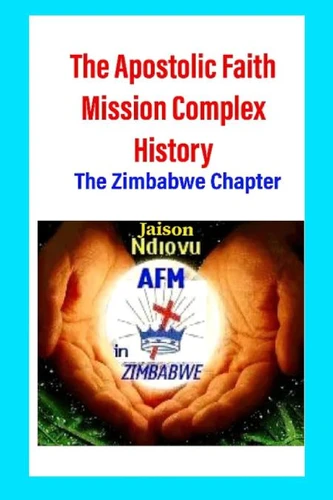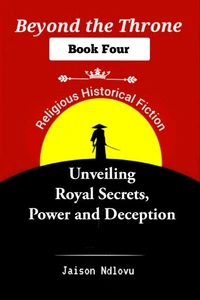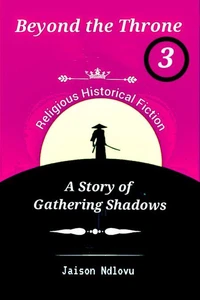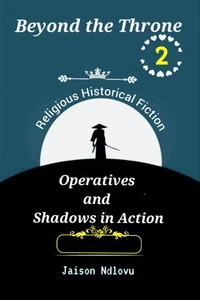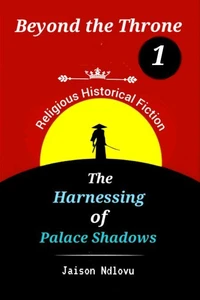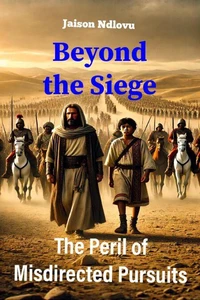The Apostolic Faith Mission Complex History
Par :Formats :
Disponible dans votre compte client Decitre ou Furet du Nord dès validation de votre commande. Le format ePub est :
- Compatible avec une lecture sur My Vivlio (smartphone, tablette, ordinateur)
- Compatible avec une lecture sur liseuses Vivlio
- Pour les liseuses autres que Vivlio, vous devez utiliser le logiciel Adobe Digital Edition. Non compatible avec la lecture sur les liseuses Kindle, Remarkable et Sony
 , qui est-ce ?
, qui est-ce ?Notre partenaire de plateforme de lecture numérique où vous retrouverez l'ensemble de vos ebooks gratuitement
Pour en savoir plus sur nos ebooks, consultez notre aide en ligne ici
- FormatePub
- ISBN8227092182
- EAN9798227092182
- Date de parution10/08/2024
- Protection num.pas de protection
- Infos supplémentairesepub
- ÉditeurBig Dog Books, LLC
Résumé
My grandfather Jenias Mufambi Chikwinya's passing in 1972 sparked a quest to uncover the rich history of the Apostolic Faith Mission (AFM) in Zimbabwe. Through family accounts and research, I've pieced together a narrative that spans generations, exploring the church's development, challenges, and triumphs. The AFM's roots trace back to Charles Fox Parham and the Azusa Street Revival, shaping the global Pentecostal movement.
John Graham Lake founded the AFM in South Africa in 1908, emphasizing divine healing, evangelism, and the Pentecostal experience. The church grew rapidly, but faced splits and divisions, including Lake's departure in 1913. In Zimbabwe, the AFM was introduced by immigrant workers in 1908 and gained recognition in 1943. Missionaries like Dugmore and Manamela played key roles in spreading the Pentecostal message.
Pieter Luttig's ministry in Kadoma from 1918 thrived, despite challenges and controversies. Enoch Gwanzura, a pivotal figure, helped the church gain recognition and became a self-appointed head minister. His legacy continued through his family. The AFM in Zimbabwe underwent a significant transformation in 1983, marking a new era of autonomy and self-determination. Langton Kupara assumed leadership, symbolizing the transition from foreign to local stewardship.
However, the delayed transition raises questions about loyalty, segregation, and empowerment. The AFM's history has been rewritten to prioritize certain narratives and agendas, marginalizing several pioneers and elders. This biased approach distorts the church's true heritage and undermines its integrity. The AFM has experienced numerous breakaways, including those led by Florence Crawford, Morgan Sengwayo, Engenas Lekganyane, Samuel Moyo, and Elijah Mugodhi.
Despite these challenges, the AFM remains a significant player in the Pentecostal movement. Through my research, I aim to honor the contributions of local leaders like my grandfather and uncover the rich history of the AFM in Zimbabwe. By exploring the church's development, challenges, and triumphs, I hope to provide a more comprehensive understanding of the AFM's role in shaping Zimbabwe's religious landscape.
John Graham Lake founded the AFM in South Africa in 1908, emphasizing divine healing, evangelism, and the Pentecostal experience. The church grew rapidly, but faced splits and divisions, including Lake's departure in 1913. In Zimbabwe, the AFM was introduced by immigrant workers in 1908 and gained recognition in 1943. Missionaries like Dugmore and Manamela played key roles in spreading the Pentecostal message.
Pieter Luttig's ministry in Kadoma from 1918 thrived, despite challenges and controversies. Enoch Gwanzura, a pivotal figure, helped the church gain recognition and became a self-appointed head minister. His legacy continued through his family. The AFM in Zimbabwe underwent a significant transformation in 1983, marking a new era of autonomy and self-determination. Langton Kupara assumed leadership, symbolizing the transition from foreign to local stewardship.
However, the delayed transition raises questions about loyalty, segregation, and empowerment. The AFM's history has been rewritten to prioritize certain narratives and agendas, marginalizing several pioneers and elders. This biased approach distorts the church's true heritage and undermines its integrity. The AFM has experienced numerous breakaways, including those led by Florence Crawford, Morgan Sengwayo, Engenas Lekganyane, Samuel Moyo, and Elijah Mugodhi.
Despite these challenges, the AFM remains a significant player in the Pentecostal movement. Through my research, I aim to honor the contributions of local leaders like my grandfather and uncover the rich history of the AFM in Zimbabwe. By exploring the church's development, challenges, and triumphs, I hope to provide a more comprehensive understanding of the AFM's role in shaping Zimbabwe's religious landscape.
My grandfather Jenias Mufambi Chikwinya's passing in 1972 sparked a quest to uncover the rich history of the Apostolic Faith Mission (AFM) in Zimbabwe. Through family accounts and research, I've pieced together a narrative that spans generations, exploring the church's development, challenges, and triumphs. The AFM's roots trace back to Charles Fox Parham and the Azusa Street Revival, shaping the global Pentecostal movement.
John Graham Lake founded the AFM in South Africa in 1908, emphasizing divine healing, evangelism, and the Pentecostal experience. The church grew rapidly, but faced splits and divisions, including Lake's departure in 1913. In Zimbabwe, the AFM was introduced by immigrant workers in 1908 and gained recognition in 1943. Missionaries like Dugmore and Manamela played key roles in spreading the Pentecostal message.
Pieter Luttig's ministry in Kadoma from 1918 thrived, despite challenges and controversies. Enoch Gwanzura, a pivotal figure, helped the church gain recognition and became a self-appointed head minister. His legacy continued through his family. The AFM in Zimbabwe underwent a significant transformation in 1983, marking a new era of autonomy and self-determination. Langton Kupara assumed leadership, symbolizing the transition from foreign to local stewardship.
However, the delayed transition raises questions about loyalty, segregation, and empowerment. The AFM's history has been rewritten to prioritize certain narratives and agendas, marginalizing several pioneers and elders. This biased approach distorts the church's true heritage and undermines its integrity. The AFM has experienced numerous breakaways, including those led by Florence Crawford, Morgan Sengwayo, Engenas Lekganyane, Samuel Moyo, and Elijah Mugodhi.
Despite these challenges, the AFM remains a significant player in the Pentecostal movement. Through my research, I aim to honor the contributions of local leaders like my grandfather and uncover the rich history of the AFM in Zimbabwe. By exploring the church's development, challenges, and triumphs, I hope to provide a more comprehensive understanding of the AFM's role in shaping Zimbabwe's religious landscape.
John Graham Lake founded the AFM in South Africa in 1908, emphasizing divine healing, evangelism, and the Pentecostal experience. The church grew rapidly, but faced splits and divisions, including Lake's departure in 1913. In Zimbabwe, the AFM was introduced by immigrant workers in 1908 and gained recognition in 1943. Missionaries like Dugmore and Manamela played key roles in spreading the Pentecostal message.
Pieter Luttig's ministry in Kadoma from 1918 thrived, despite challenges and controversies. Enoch Gwanzura, a pivotal figure, helped the church gain recognition and became a self-appointed head minister. His legacy continued through his family. The AFM in Zimbabwe underwent a significant transformation in 1983, marking a new era of autonomy and self-determination. Langton Kupara assumed leadership, symbolizing the transition from foreign to local stewardship.
However, the delayed transition raises questions about loyalty, segregation, and empowerment. The AFM's history has been rewritten to prioritize certain narratives and agendas, marginalizing several pioneers and elders. This biased approach distorts the church's true heritage and undermines its integrity. The AFM has experienced numerous breakaways, including those led by Florence Crawford, Morgan Sengwayo, Engenas Lekganyane, Samuel Moyo, and Elijah Mugodhi.
Despite these challenges, the AFM remains a significant player in the Pentecostal movement. Through my research, I aim to honor the contributions of local leaders like my grandfather and uncover the rich history of the AFM in Zimbabwe. By exploring the church's development, challenges, and triumphs, I hope to provide a more comprehensive understanding of the AFM's role in shaping Zimbabwe's religious landscape.

